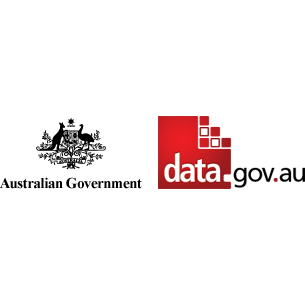Brief description
## **Abstract**This dataset and its metadata statement were supplied to the Bioregional Assessment Programme by a third party and are presented here as originally supplied.
This dataset provides a userguide and setup information relating to accessing the Gescience Australia, 1 second SRTM Digital Elevation Model (DEM), for visualisation and analysis using ESRI ArcMap and ArcCatalog.
The 1 second DSM, DEM, DEM-S and DEM-H are national elevation data products derived from the Shuttle Radar Topography Mission (SRTM) data. The SRTM data is not suitable for routine application due to various artefacts and noise.
The data has been treated with several processes to produce more usable products:
\\* A cleaned digital surface model (DSM)
\\* regular grid representing ground surface topography as well as other features including vegetation and man-made structures
\\* A bare-earth digital elevation model (DEM)
\\* regular grid representing ground surface topography, and where possible, excluding other features such as vegetation and man-made structures.
\\* A smoothed digital elevation model (DEM-S)
\\* A smoothed DEM based on the bare-earth DEM that has been adaptively smoothed to reduce random noise typically associated with the SRTM data in low relief areas.
\\* A hydrologically enforced digital elevation model (DEM-H)
\\* A hydrologically enforced DEM is based on DEM-S that has had drainage lines imposed and been further smoothed using the ANUDEM interpolation software.
The last product, a hydrologically enforced DEM, is most similar to the DEMs commonly in use around Australia, such as the GEODATA 9 Second DEM and the 25 m resolution DEMs produced by State and Territory agencies from digitised topographic maps.
For any analysis where surface shape is important, one of the smoothed DEMs (DEM-S or DEM-H) should be used. DEM-S is preferred for shape and vertical accuracy and DEM-H for hydrological connectivity. The DSM is suitable if you want to see the vegetation as well as the land surface height. There are few cases where DEM is the best data source, unless access to a less processed product is necessary.
The 1 second DEM (in its various incarnations) has quite different characteristics to DEMs derived by interpolation from topographic data. Those DEMs are typically quite smooth and are based on fairly accurate but sparse source data, usually contours and spot heights supplemented by drainage lines. The SRTM data is derived from radar measurements that are dense (there is essentially a measurement at almost every grid cell) but noisy.
Version 1.0 of the DSM was released in early 2009 and version 1.0 of the DEM was released in late 2009. Version 1.0 of the DEM-S was released in July 2010 and version 1.0 of the hydrologically enforced DEM-H was released in October 2011. These products provide substantial improvements in the quality and consistency of the data relative to the original SRTM data, but are not free from artefacts. Improved products will be released over time.
The 3 second products were derived from the 1 second data and version 1.0 was released in August 2010. Future releases of these products will occur when the 1 second products have been improved. At this stage there is no 3 second DEM-H product, which requires re-interpolation with drainage enforcement at that resolution.
## **Dataset History**
The following datasets were used to derive this version of the 1 second DEM products:
Source data
1. SRTM 1 second Version 2 data (Slater et al., 2006), supplied by Defence Imagery and Geospatial Organisation (DIGO) as 813 1 x 1 degree tiles. Data were produced by NASA from radar data collected by the Shuttle Radar Topography Mission in February 2000.
2. GEODATA 9 second DEM Version 3 (Geoscience Australia, 2008) used to fill voids.
3. SRTM Water Body Data (SWBD) shapefile accompanying the SRTM data (Slater et al., 2006). This defines the coastline and larger inland waterbodies for the DEM and DSM.
4. Vegetation masks and water masks applied to the DEM to remove vegetation.
Full metadata, methodologies and lineage descriptions can be found in the PDF userguide within this dataset.
Further information can be found at http://www.ga.gov.au/metadata-gateway/metadata/record/gcat_72759
## **Dataset Citation**
Geoscience Australia (2011) Geoscience Australia, 1 second SRTM Digital Elevation Model (DEM). Bioregional Assessment Source Dataset. Viewed 10 December 2018, http://data.bioregionalassessments.gov.au/dataset/9a9284b6-eb45-4a13-97d0-91bf25f1187b.
Full description
Geoscience Australia, 1 second SRTM Digital Elevation Model (DEM) - Data FileSpatial Coverage And Location
text: POLYGON ((0 0, 0 0, 0 0, 0 0))
Subjects
Australia |
Central West subregion |
Clarence-Moreton bioregion |
Galilee subregion |
Gippsland Basin bioregion |
Gloucester subregion |
Gwydir subregion |
Hunter subregion |
Namoi subregion |
Sydney Basin bioregion |
elevation |
User Contributed Tags
Login to tag this record with meaningful keywords to make it easier to discover
Identifiers
- Local : 9a9284b6-eb45-4a13-97d0-91bf25f1187b
- URI : data.gov.au/data/dataset/da926e47-1cd8-4dc9-b859-cbc18c29d858



